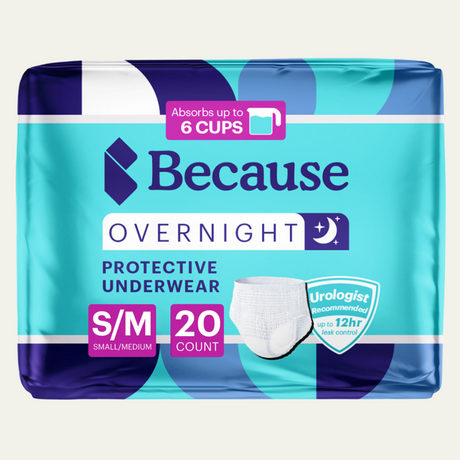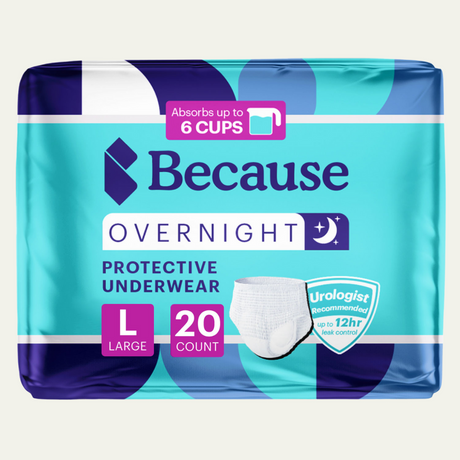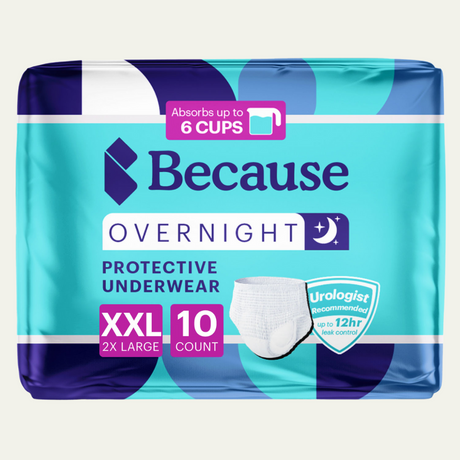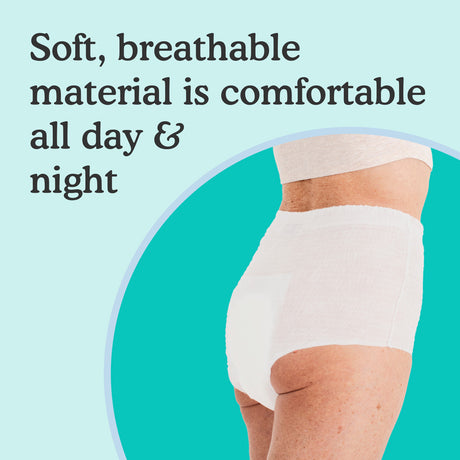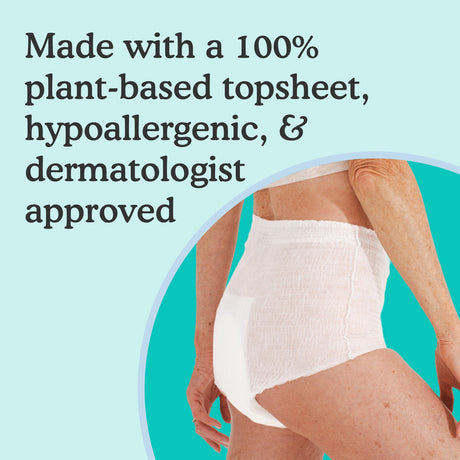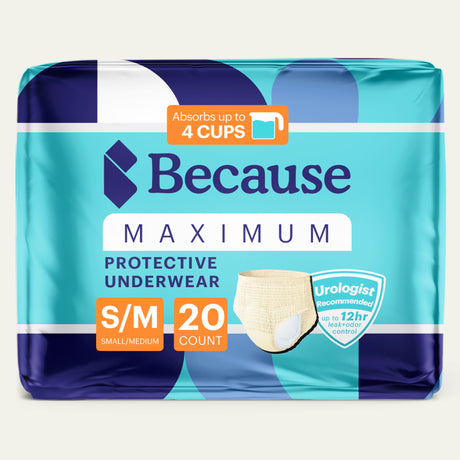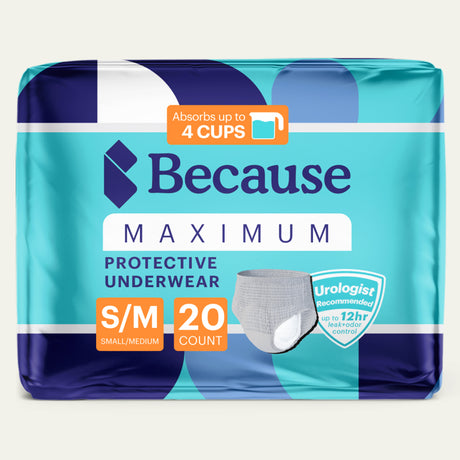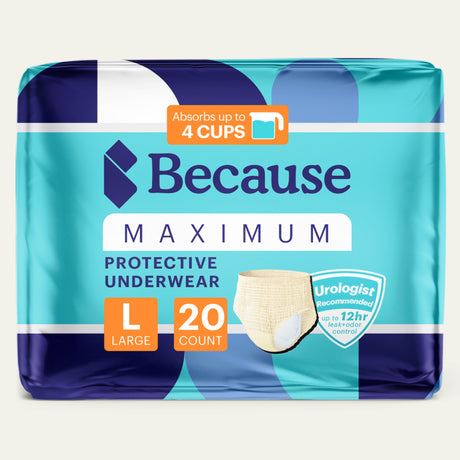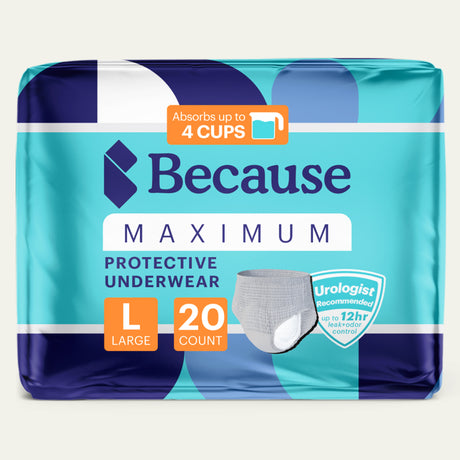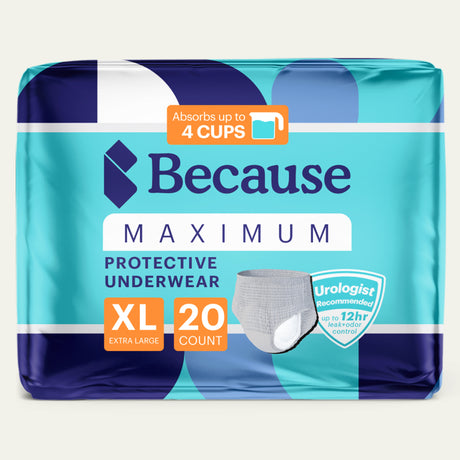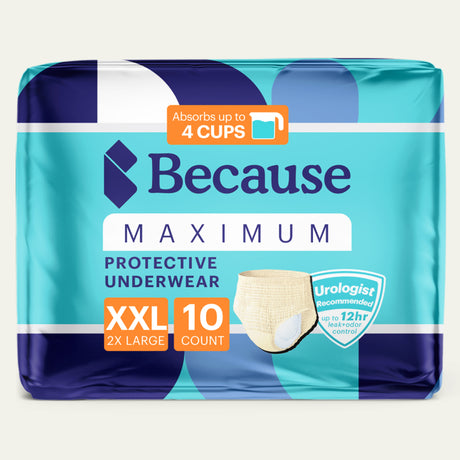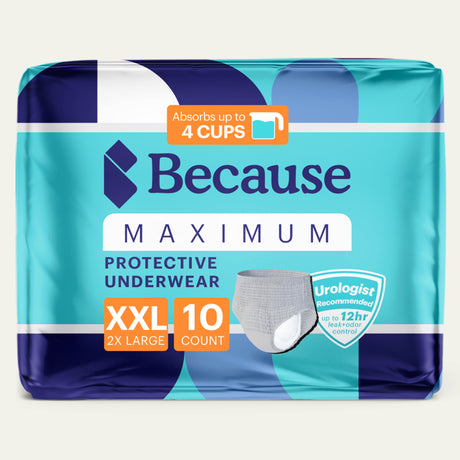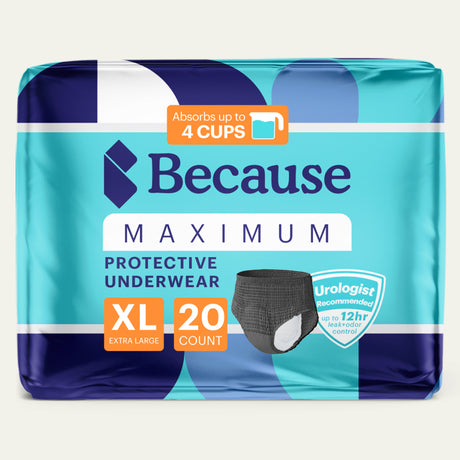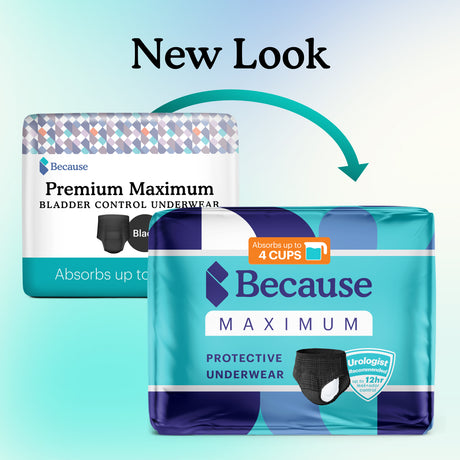Navigating the complexities of incontinence can be challenging, especially when trying to understand your rights under the Americans with Disabilities Act (ADA). Incontinence can be isolating and managing symptoms outside the home can be difficult. 43% of American women 50-64 and 51% of women 65-80 experience incontinence, many of those women may be wondering whether there are accommodations that can be made to make managing their condition at work, school, or simply in public easier.
The ADA, enacted to prevent discrimination and promote full participation for individuals with disabilities, covers a wide range of conditions, but where does incontinence fit within this framework?
This blog aims to clarify the relationship between incontinence and the ADA, examining whether it qualifies as a disability and what accommodations and protections may be available. By understanding your rights, you can better advocate for yourself or your loved ones, ensuring that incontinence does not become a barrier to living a full and active life.

Is Overactive Bladder or Urinary Incontinence a Disability?
Understanding whether incontinence is considered a disability under the ADA requires examining the legal definitions and qualifications set forth by the Act. This section delves into what constitutes a disability under the ADA and how incontinence may meet these criteria, ensuring that individuals can access necessary protections and accommodations.
Definition of Disability Under the ADA
According to the ADA, a disability is defined as “a physical or mental impairment that substantially limits one or more major life activities. This definition also includes individuals who have a history or record of such an impairment, or who are perceived by others as having such an impairment.”
What Makes a Disability a Disability According to the ADA:
For the ADA to consider something a disability, the following qualifications must be met:
- Physical or Mental Impairment: The condition must involve a physical or mental impairment. This includes any physiological disorder or condition, cosmetic disfigurement, or anatomical loss affecting one or more body systems, as well as any mental or psychological disorder.
- Substantial Limitation: The impairment must substantially limit one or more major life activities. This means the condition significantly restricts the ability to perform activities that are of central importance to daily life compared to the average person in the general population.
- Major Life Activities: These activities include, but are not limited to, functions such as walking, talking, seeing, hearing, and performing manual tasks, as well as major bodily functions like the immune system, normal cell growth, and digestive, bowel, bladder, neurological, brain, respiratory, circulatory, endocrine, and reproductive functions.
Additionally, the ADA also covers individuals who have a record or history of such an impairment, or who are perceived by others as having such an impairment, even if they do not currently have a substantial limitation. This ensures protections against discrimination based on past or perceived disabilities.



Some activities that courts have decided are not major life activities are:
- Caring for others
- Driving
- Ability to have a relationship
- Grocery shopping
Does Incontinence Qualify?
Incontinence could qualify as a disability under the ADA if it meets certain criteria established by the Act. To determine if incontinence qualifies, it is essential to evaluate whether the condition involves a physical impairment, whether it substantially limits one or more major life activities, and if these limitations are significant in comparison to the average person in the general population.
- Physical Impairment: Incontinence is typically caused by underlying medical conditions such as neurological disorders, prostate issues, or other health problems that affect bladder or bowel control.
- Substantial Limitation: For incontinence to qualify as a disability, it must substantially limit one or more major life activities. Major life activities include tasks such as walking, standing, and caring for oneself, as well as major bodily functions like bladder function. If incontinence significantly restricts an individual's ability to perform these activities compared to the average person, it may meet the criteria for a substantial limitation.
- Assessment of Limitations: The impact of incontinence on daily life can vary significantly between individuals. For some, the condition may cause frequent and unpredictable loss of bladder or bowel control, leading to substantial limitations in activities such as working, attending social events, or performing everyday tasks. In such cases, the severity and frequency of incontinence episodes can demonstrate a substantial limitation in major life activities.
To support this conclusion, the U.S. Equal Employment Opportunity Commission (EEOC) provides guidance on what constitutes a disability under the ADA, emphasizing the need to consider whether an impairment substantially limits major life activities. The EEOC's guidance notes that conditions affecting major bodily functions, such as bladder function, are included under the definition of major life activities.
Can People with Incontinence Get Benefits?
People with incontinence can potentially receive benefits under the ADA if their condition qualifies as a disability by substantially limiting one or more major life activities, such as bladder function or personal care. If incontinence meets these criteria, individuals may be entitled to reasonable accommodations in the workplace, such as modified work schedules, access to restroom facilities, or job restructuring, to help them perform their job duties effectively. This ensures that they are not discriminated against and can participate fully in various aspects of public life.
However, if you do not qualify for accommodation under the ADA there are other channels you can try to get support.

Qualifying for Support through SSA
To get support for disability through Social Security (SS), individuals must apply for either Social Security Disability Insurance (SSDI) or Supplemental Security Income (SSI), depending on their work history and financial situation. Here are the key qualifications for each program:
Social Security Disability Insurance (SSDI)
- Work History: Applicants must have worked in jobs covered by SS and paid SS taxes. The number of work credits needed depends on the applicant's age at the time of disability.
- Medical Condition: The applicant must have a medical condition that meets the SSA’s definition of disability. This means the condition must be severe, last at least one year or be expected to result in death, and prevent the individual from performing substantial gainful activity (SGA).
- Proof of Disability: Applicants must provide medical documentation and other evidence to prove their disability. The SSA maintains a list of impairments that are considered severe enough to qualify automatically, but conditions not on the list can still qualify if they meet the criteria.
Supplemental Security Income (SSI)
- Financial Need: SSI is a needs-based program for individuals with limited income and resources. Applicants must have resources below $2,000 for individuals or $3,000 for couples, excluding their primary residence and, in most cases, one vehicle.
- Medical Condition: Similar to SSDI, the applicant must have a medical condition that meets the SSA's definition of disability.
- Citizenship: Applicants must be U.S. citizens or qualified aliens.
Application Process
- Initial Application: Applications can be submitted online, by phone, or in person at a local Social Security office. Applicants need to provide detailed information about their medical condition, work history, and financial status.
- Review: The SSA will review the application, which includes checking medical records and possibly conducting an interview or requiring a medical exam. In a medical exam for incontinence, a physician may run several tests including a urinalysis, cystoscopy, or urodynamic study.
- Decision: The SSA will notify the applicant of the decision. If denied, applicants have the right to appeal the decision.
To determine whether your condition qualifies as a disability under SSI, you will need to review the listing of impairments. Some disorders that are evaluated under this list include:
- Inflammatory bowel disease, which could cause fecal incontinence
- Parkinson’s Disease, which often causes both urinary and fecal incontinence
- Prostate Cancer, which can cause incontinence in men
Qualifying for Support through Medicare
Qualifying for disability support through Medicare involves meeting specific criteria. Generally, individuals who receive Social Security Disability Insurance (SSDI) benefits are eligible for Medicare. Here are the key qualifications and steps to qualify:
- Receipt of SSDI Benefits: You must be receiving SSDI benefits due to a qualifying disability. This typically means that the SSA has determined that you have a medical condition that prevents you from working and is expected to last at least one year or result in death.
- Waiting Period: There is a mandatory 24-month waiting period from the time you start receiving SSDI benefits before you become eligible for Medicare. This means you will automatically qualify for Medicare after you have received SSDI benefits for two years.
If you’re eligible for Medicare, you may be eligible for some coverage of incontinence products if they are deemed medically necessary via a prescription from your doctor. Check out this blog to learn more.
Qualifying for Support through Medicaid
Qualifying for disability support through Medicaid involves meeting specific criteria that vary by state. Medicaid is a joint federal and state program that provides health coverage to eligible low-income individuals, including those with disabilities.
Here are the general qualifications and steps to apply:
- Income and Resource Limits:
- Applicants must have low income and limited resources to qualify. Each state sets its own guidelines within federal parameters.
- Disability Determination:
- Applicants must be considered disabled by the Social Security Administration (SSA) or the state Medicaid agency.
- Categorical Eligibility:
- Some individuals automatically qualify for Medicaid if they fall into certain categories, such as those receiving Supplemental Security Income (SSI) benefits. Many states grant Medicaid eligibility to SSI recipients without a separate application.
- Medically Needy Program:
- Some states offer a Medically Needy program for individuals whose income is too high to qualify under standard Medicaid criteria but have significant medical expenses. This program allows individuals to "spend down" their income on medical costs to meet the state's income eligibility limits.
Steps to Obtain Medicaid Disability Support
- Apply for Medicaid:
- Applications can be submitted through your state’s Medicaid office, the Health Insurance Marketplace, or local social services offices. Applications may be completed online, by mail, by phone, or in person, depending on the state.
- Provide Necessary Documentation:
- You will need to provide detailed information about your income, resources, medical condition, and disability status.
- Disability Determination Process:
- If you are not already receiving SSI or SSDI benefits, you may need to undergo a disability determination process through the state Medicaid agency. This process involves a review of your medical history and possibly a medical examination.
- Approval and Enrollment:
- Once approved, you will receive a notice of eligibility and information on your Medicaid benefits. Coverage can be retroactive to cover medical expenses incurred up to three months prior to your application date, depending on state policies.
If you are eligible for Medicaid, you may be able to get incontinence supplies for free. Check out this blog for more information!

How to Seek Accommodations for Incontinence
Seeking accommodations for incontinence is crucial to maintaining a comfortable and productive lifestyle. Understanding where accommodations can be made, the necessary documentation, and the steps to take can empower individuals to advocate for their needs effectively.
Where can accommodations be made?
Accommodations for incontinence, as mandated by the ADA, can be made in various settings to ensure that individuals with this condition can participate fully in daily activities and responsibilities. These settings include workplaces, educational institutions, public facilities, and housing, among others.
Workplaces: Employers are required to provide reasonable accommodations for employees with disabilities, including those with incontinence.
Educational Institutions: Schools and universities must accommodate students with disabilities under the ADA.
Public Facilities: Public entities such as government buildings, parks, and transportation services must ensure accessibility for individuals with disabilities.
By understanding these settings and the types of accommodations that can be made, individuals with incontinence can better advocate for their rights and ensure they have the necessary support to manage their condition effectively.
What are the steps to getting accommodations for disabilities under the ADA?
Obtaining accommodations for disabilities under the ADA involves several key steps to ensure that your needs are recognized and met appropriately. Here is a structured guide to help you navigate the process:
- Step 1: Identify Your Needs: Evaluate your condition & consult healthcare providers
- Step 2: Gather documentation such as medical documentation, personal statements, and supporting documents.
- Step 3: Make a formal request
- Step 4: Meet with the decision-maker:
- Step 5: Implement and follow-up
- Step 6: Address issues, appeals, and file complaints if necessary
By following these steps, you can effectively advocate for and obtain the accommodations you need to manage your disability under the ADA.
Tips for Managing Incontinence and OAB
Managing incontinence and overactive bladder (OAB) can be challenging, but with the right strategies, you can maintain your daily routine with confidence. Here are some practical tips to help manage your condition at work, while traveling, and in general to alleviate symptoms.
At Work
- Plan Bathroom Breaks: Schedule regular bathroom breaks throughout your day to avoid unexpected urgency.
- Wear Protective Products: Use absorbent pads, boosters, or protective underwear to manage leaks discreetly.
- Stay Hydrated Smartly: Drink fluids at regular intervals to stay hydrated but avoid excessive intake before important meetings or tasks.
- Keep Spare Supplies: Store extra incontinence products and a change of clothes at your workplace.
- Communicate: If necessary, inform your employer or HR about your condition to receive appropriate accommodations, such as flexible breaks or access to a private restroom.
Traveling
- Plan Ahead: Research restroom locations along your route and at your destination. Use apps that locate nearby restrooms.
- Pack Essentials: Carry a travel kit with absorbent products, cleansing wipes, disposal bags, and a change of clothes.
- Choose Aisle Seats: When flying or on public transport, opt for an aisle seat for easier access to restrooms.
- Stay Hydrated Wisely: Drink fluids in moderation and avoid diuretics like caffeine before and during travel.
- Dress Comfortably: Wear loose, comfortable clothing to make changing easier if needed.
Managing Symptoms
- Pelvic Floor Exercises: Perform Kegel exercises regularly to strengthen pelvic floor muscles and improve bladder control.
- Bladder Training: Gradually extend the time between bathroom visits to train your bladder to hold urine longer.
- Dietary Adjustments: Avoid foods and drinks that can irritate the bladder, such as caffeine, alcohol, spicy foods, and acidic fruits.
- Weight Management: Maintain a healthy weight to reduce pressure on the bladder.
- Stay Active: Regular physical activity can help manage weight and improve overall bladder function.
- Medications: Consult your healthcare provider about medications that can help manage OAB symptoms.
Implementing these strategies can help you manage incontinence and OAB more effectively, allowing you to lead a more comfortable and confident life.
Get Professional Help and Support
Managing incontinence and overactive bladder (OAB) effectively often requires professional guidance and support. Medical professionals, legal resources, and support groups can help you build a community for the support you need.
Medical Resources
- Primary Care Physician: Start with your primary care physician, who can assess your symptoms, provide initial advice, and refer you to specialists if needed.
- Urologist: Urologists specialize in urinary issues and can offer advanced diagnostic tests and treatments for incontinence and OAB.
- Gynecologist: For women, gynecologists can address incontinence issues related to pelvic health and provide tailored treatment options.
- Gastroenterologist: If bowel incontinence is also a concern, a gastroenterologist can help manage digestive health and related symptoms.
Legal Resources
Legal resources for the ADA are crucial for understanding and asserting your rights to accommodations and protections. Organizations such as the Equal Employment Opportunity Commission (EEOC) provide guidance on workplace rights, while the ADA National Network offers comprehensive resources and support for individuals navigating ADA regulations. Additionally, the Department of Justice (DOJ) enforces ADA compliance in public accommodations and services. These resources can offer assistance in filing complaints, accessing legal counsel, and obtaining information on ADA provisions to ensure you receive the necessary accommodations and protections under the law.
Support Groups
Support groups for disabilities and people with incontinence offer a valuable community for sharing experiences, advice, and emotional support. These groups, both in-person and online, provide a safe space to discuss challenges and coping strategies, helping individuals feel less isolated and more empowered in managing their condition. Connecting with others who understand your struggles can significantly improve your quality of life and well-being.
If you’re struggling with incontinence, join one of our private incontinence support groups:
Women’s Incontinence Support Group
Men’s Incontinence Support Group
Want to try a sample pack of our incontinence products? Take our bladder protection quiz to find the right product for you!
Sources:
U.S. Department of Justice, Civil Rights Division. (2020, Feb. 28). Guide to Disability Rights Laws. Retrieved from https://www.ada.gov/resources/disability-rights-guide/
Social Security Administration. (n.d.). Disability Evaluation Under Social Security (Blue Book) - Adult Listings. Retrieved from https://www.ssa.gov/disability/professionals/bluebook/AdultListings.htm
Center for Medicare Advocacy. (n.d.). Medicare Coverage for People with Disabilities. Retrieved from https://medicareadvocacy.org/medicare-info/medicare-coverage-for-people-with-disabilities/


